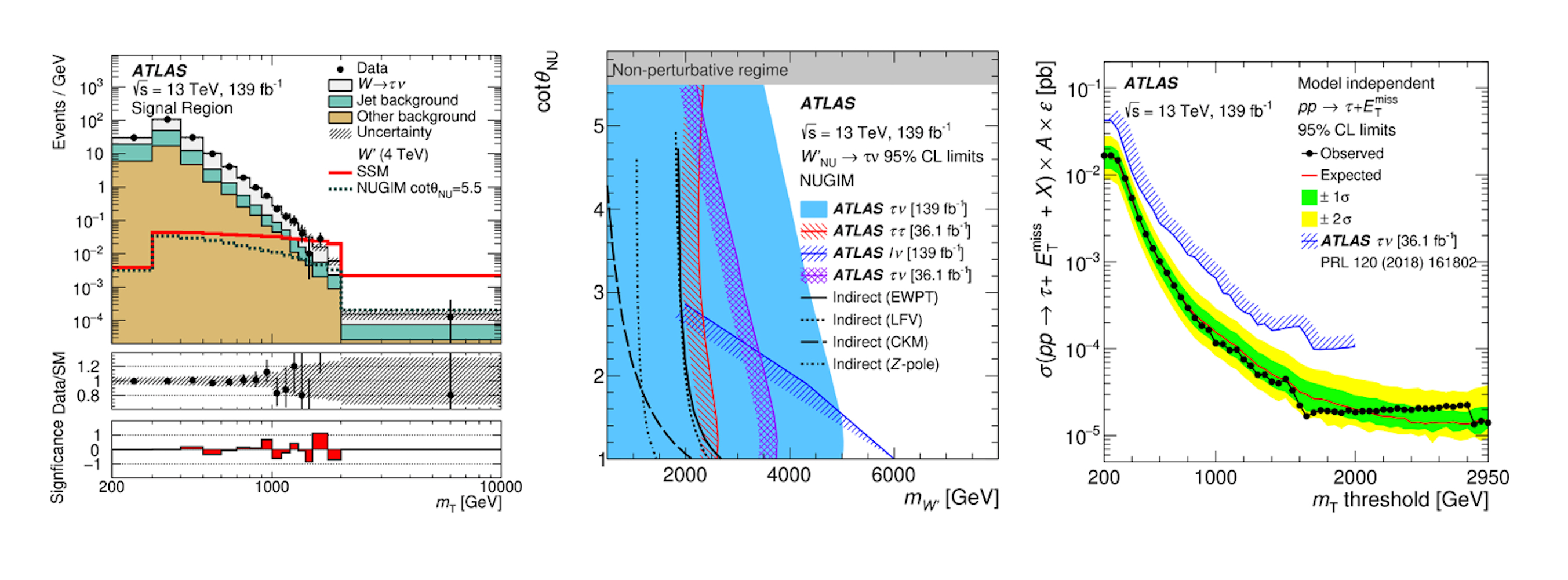Mono-tau lepton searches with the ATLAS Detector at Run 2
This paper from ATLAS aims to discover new particles, such as W' bosons, that decay into a tau lepton and large missing transverse energy. No significant excess over the Standard Model expectation is observed, but upper limits of the W' bosons cross sections are derived.

Fig 1, 2, 3
Searches for physics beyond the Standard Model (BSM) are one of the main aims of the ATLAS scientific program at the LHC. In this context, a plethora of experiments are performed using the general-purpose detector of the ATLAS Experiment, aiming to discover deviations in the data from the Standard Model expectations. This search [1] is a continuation of the first search conducted by ATLAS [2], aiming to discover new resonances (W' bosons) that can decay into a tau lepton and a neutrino. Such searches are motivated by several experimental indications of lepton flavor-violation, an explanation of the high mass of the top quark and to constrain theoretical models. The tau lepton is reconstructed at ATLAS as a special type of jet, while the neutrino escapes the detector, resulting in a momentum imbalance (missing transverse energy). Both the tau and the neutrino will have very large transverse momenta due to the large masses of the hypothetical W' bosons. This search verified that the 139/fb of data collected with the ATLAS detector during pp-collisions at a center-of-mass energy of 13 TeV between 2015 and 2018 agreed well with the Standard Model hypothesis (Fig.1). The data was instead used to derive upper limits on the production probability of those resonances ("cross-section") (Fig.2) and to exclude certain regions of the BSM models (Fig.3). These upper limits are the most stringent up to date. These upper limits are the most stringent up to date. In addition, the search for very high mass resonances is still statistically limited, which means that it will benefit from the larger dataset collected by the ATLAS Detector in Run 3 LHC period (after 2022).